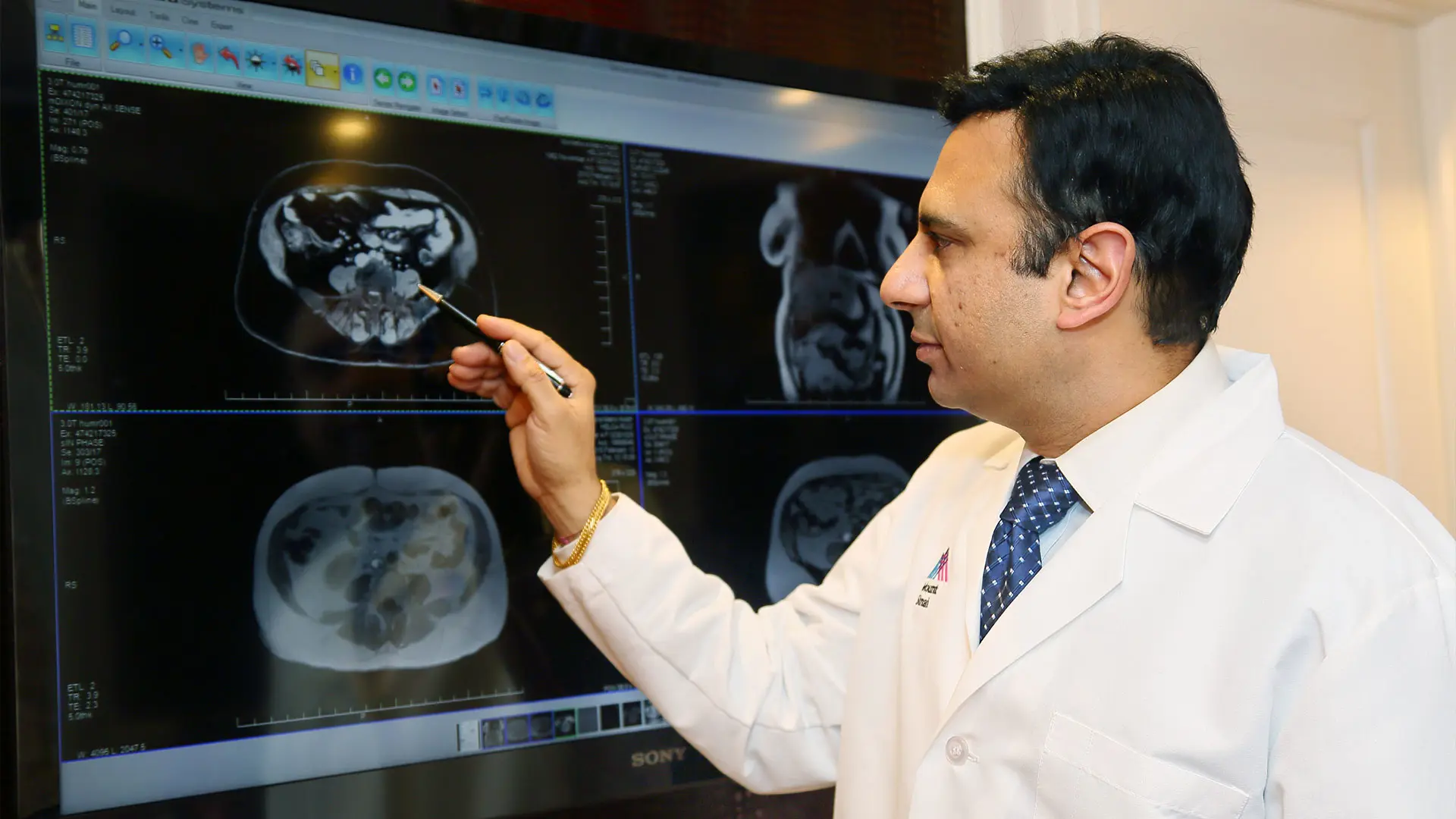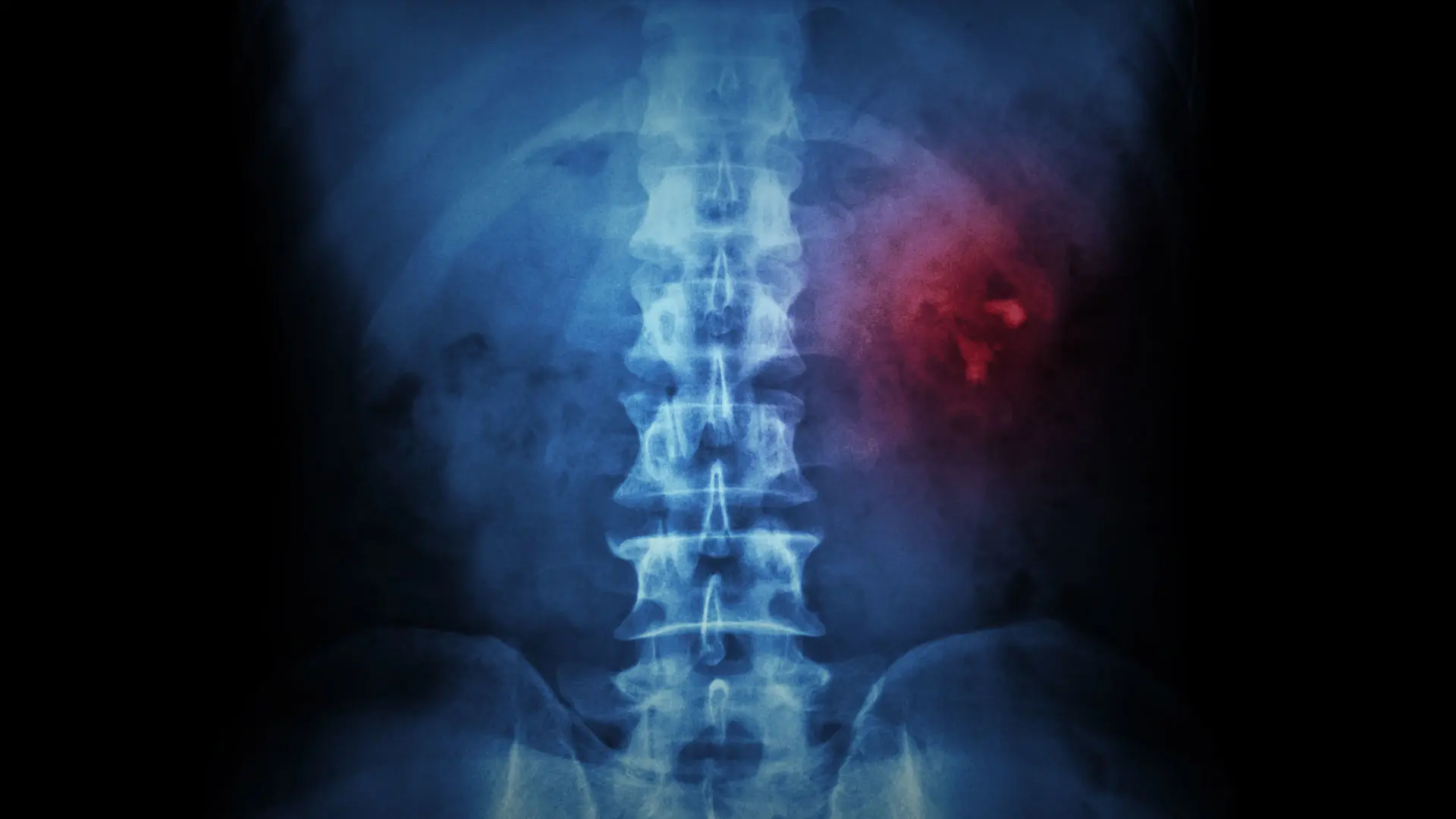The Mount Sinai Department of Urology continues to push the envelope on patient outcomes, comfort, and recovery from surgery to remove ever larger and more complex kidney stones.
Under the leadership of Mantu Gupta, MD, Professor of Urology at the Icahn School of Medicine at Mount Sinai, the Department has worked diligently over the years to bring percutaneous nephrolithotomy (PCNL) to its latest threshold: a totally tubeless outpatient procedure performed with the help of ultrasound guidance and improved patient positioning. For an operation that once required a hospital stay and administration of opioids or narcotics to relieve severe post-operative pain, the newest minimally invasive technique is a major breakthrough for both patients and urologists who perform it.
“Patients are pretty amazed to learn that large stones up to several centimeters in size are removed through such a tiny keyhole incision,” says Dr. Gupta, who is Site Chair of Urology at Mount Sinai West and Mount Sinai Morningside. “As a result, they don’t require stitches or any special wound care afterward. We simply apply glue to the puncture site and advise them to take a nonsteroidal inflammatory agent for any pain they may experience. Patients also like the fact they don’t need to return for a month.”

“There is always room to improve procedures we thought were good—to make them less harmful and more tolerable for patients,” says Mantu Gupta, MD, Professor of Urology, a pioneer in the field of percutaneous nephrolithotomy (PCNL). “As urologists, we should never be afraid to keep pushing the envelope.”
Dr. Gupta is a pioneer in the field of PCNL, having further miniaturized the standard procedure through the development of mini-PCNL, ultra-mini PCNL, and now totally tubeless PCNL with ultrasound guidance in place of X-ray or fluoroscopy to facilitate access.
“With ultrasound, we’re able to watch the needle enter the kidney and to place it precisely where it will cause the least amount of bleeding and allow us to extract all stones through one instead of multiple tracts,” he says. “Ultrasound also provides the correct trajectory so that once we enter, we don’t have to torque, pull, push, or prod the kidney. We go in through a straight line and end up perfectly aligned for surgery.”
Another major change Dr. Gupta has initiated is positioning the patient. The traditional prone placement has been replaced by supine, with the hip and shoulder tilted slightly to the side. This gives the surgeon access through the front or side of the abdomen, where the muscles are fewer and thinner, resulting in less pain for the patient. Another benefit is that general anesthesia can now be replaced by regional anesthesia, or just a laryngeal mask airway, allowing the patient to wake up and recover more quickly from surgery.
Interestingly, the smaller incision used in totally tubeless PCNL causes less renal injury and bleeding. The reason is that balloon dilation can now be used instead of coaxial dilation, allowing the surgeon to minimize renal trauma by not pushing through the kidney tissue but simply stretching it, according to Dr. Gupta. “We found that the smaller tract size is less harmful and less painful compared to the larger size,” he says.
Validating totally tubeless PCNL as a safe and efficacious strategy for removing large and complex stones is a May 2024 study by Dr. Gupta and his team in the Journal of Clinical Medicine. The retrospective study reports that compared to prior approaches where a stent or nephrostomy tube was placed, totally tubeless PCNL has a similar complication rate and better post-operative outcomes. The latter includes less pain and risk of bleeding, as well as shorter hospital stays that, in turn, reduce cost to patients and the health care system.
The underlying message is clear to Dr. Gupta, who teaches totally tubeless PCNL to physicians from around the world at Mount Sinai’s operating theatre in Manhattan.
“There is always room to improve procedures we thought were good—to make them less harmful and more tolerable for patients,” he says. “As urologists, we should never be afraid to keep pushing the envelope.”
